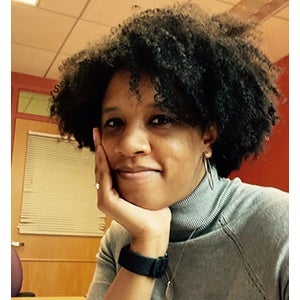In celebration of Black History Month, the American Statistical Association has recognized a group of 12 Black/African American professors, researchers, volunteers, and health care professionals who have made tremendous contributions to the statistics field. We are extremely proud that of the 12 people featured, 4 are members of our Harvard Biostats community.We will be featuring their interviews over the next few weeks.
 BRIANA JOY STEPHENSONAffiliation: Assistant Professor of Biostatistics, Harvard T.H. Chan School of Public HealthEducation: BS, Mathematics, Massachusetts Institute of TechnologyMPH, Biostatistics, The George Washington UniversityPhD, Biostatistics, The University of North Carolina at Chapel Hill
BRIANA JOY STEPHENSONAffiliation: Assistant Professor of Biostatistics, Harvard T.H. Chan School of Public HealthEducation: BS, Mathematics, Massachusetts Institute of TechnologyMPH, Biostatistics, The George Washington UniversityPhD, Biostatistics, The University of North Carolina at Chapel Hill
I was raised in Columbia, Maryland, where math came naturally to me. My interest was fostered by my parents, who purchased summer workbooks and enrolled me in STEM summer and after-school programs. My older brother also unknowingly motivated me. I challenged myself to master everything he learned so I would be competitive during our family Jeopardy games. This competitive spirit transcended to school, where I strove to excel in the classroom. I eventually received the Top Flight Senior award at my tech magnet high school and a scholarship to MIT.I majored in mathematics, but was also pre-med. This scholastic dichotomy created an internal conflict as I oscillated between which courses I preferred until an interesting event occurred at medical school. While precepting at a clinic and collecting patient histories, I caught myself doing “mental machine learning,” predicting the source of an injury based on their intake data. I noticed I was more interested in addressing ways to reduce injuries of similar causes in that target population than I was in the individual. I immediately shifted my focus to public health, withdrawing from medical school and pursuing an MPH in biostatistics at The George Washington University (GWU). I also began training at the US Food and Drug Administration as a mathematical statistician in the Student Career Experience Program.The switch to public health was kismet, and my professors and family encouraged me to earn a doctorate. Initially, I was apprehensive. Aside from my mom who withdrew from her PhD program when she gave birth to me, there was no other person I knew who had forged this path and looked like me.Instead, I accepted an Oak Ridge Institute of Science and Engineering fellowship at the US Department of Defense as a senior statistician. I used this appointment to broaden my research skills, garner teaching experience, and contemplate my next career stage.As the sole statistician in an office of psychologists and psychiatrists, this job was an adrenaline rush. It was invigorating to conduct statistical analyses on the psychological health and strategic operations of military personnel pre- and post-deployment while drafting reports for Congress and the Pentagon. It was humbling to witness the immediate impact of my analyses in the field.During my fellowship, I also taught introductory biostatistics to MPH students at GWU, which awakened my passion for learning. These two experiences motivated my doctoral pursuit and cemented my path for academia.Motivated by some of the methodological gaps I encountered handling military population data and its dependencies on service, rank, and deployments, I concentrated on developing methods that would identify patterns among a large set of exposures in diverse populations. My research received national and international recognition, including the University of North Carolina dissertation award for public health impact.Now at Harvard T. H. Chan School of Public Health, I reflect on my circuitous yet intentional professional journey and am most proud of the influence I have had on the young women who follow me and have the confidence and encouragement to pursue the road less traveled.



